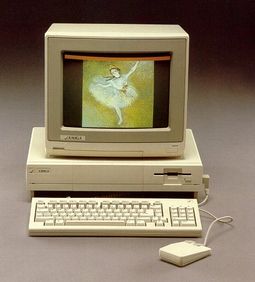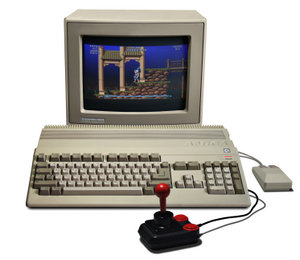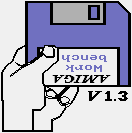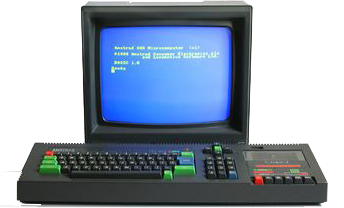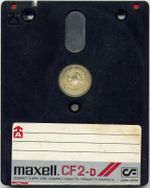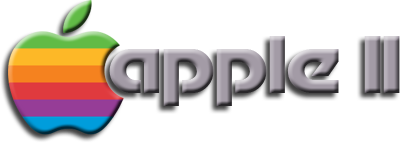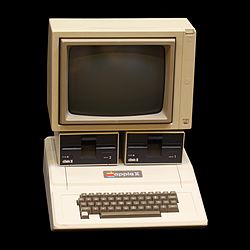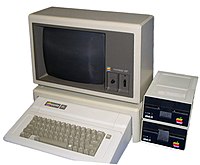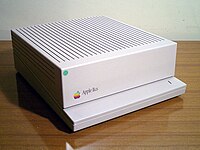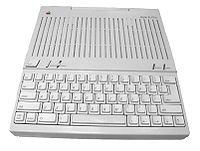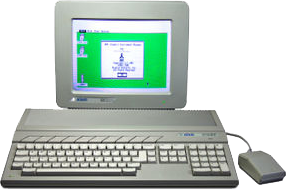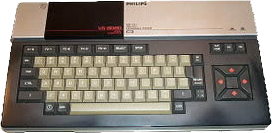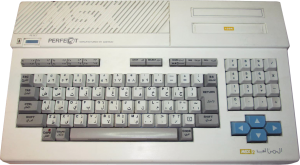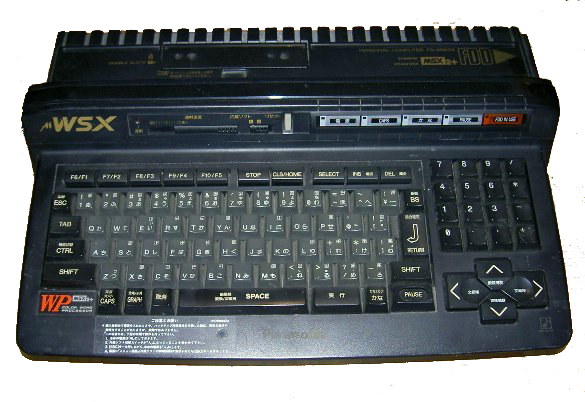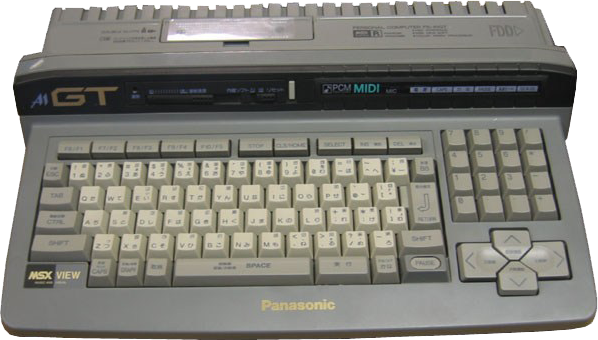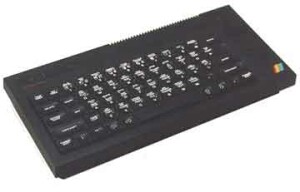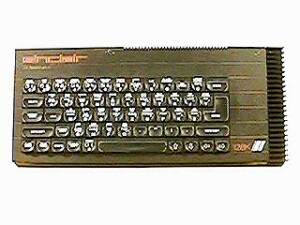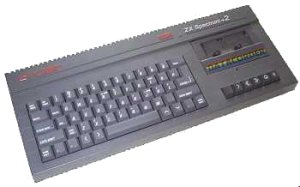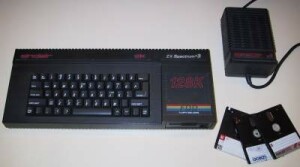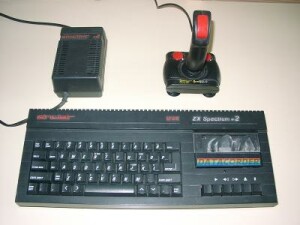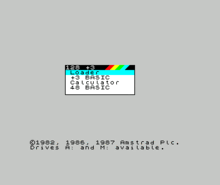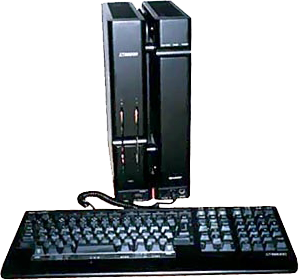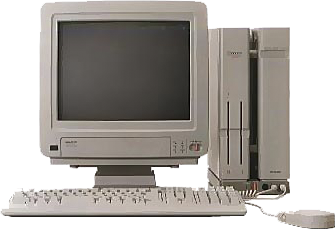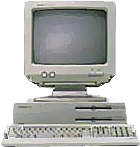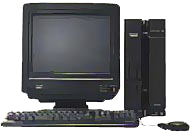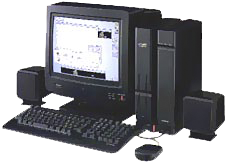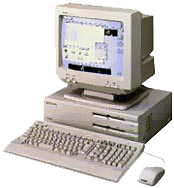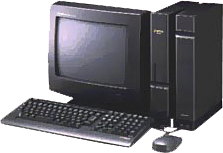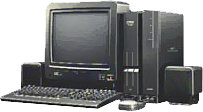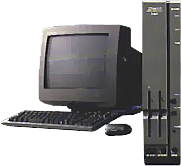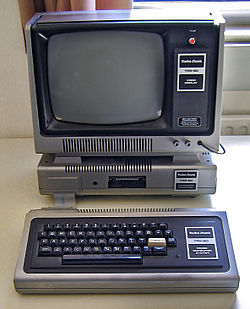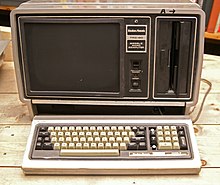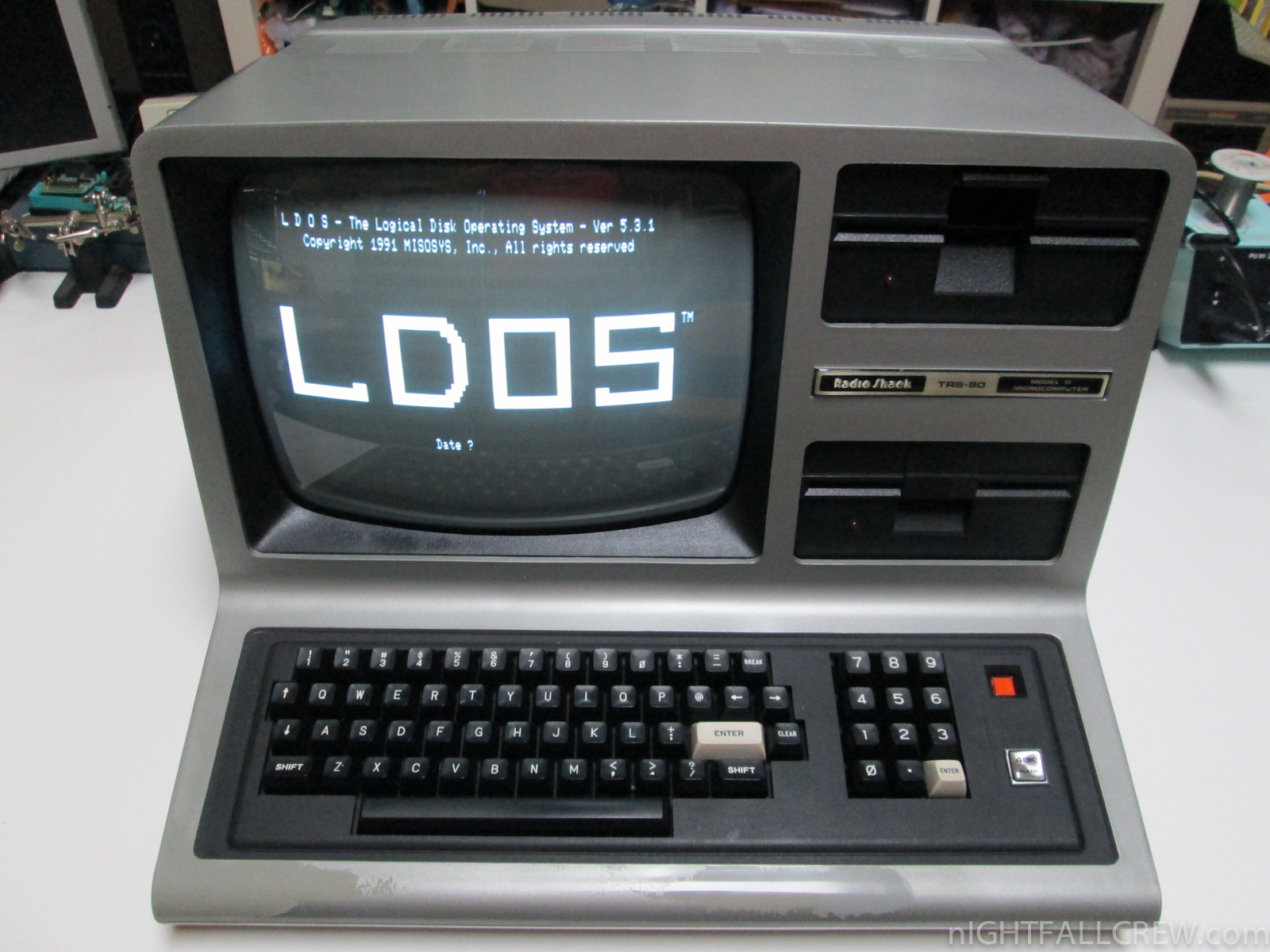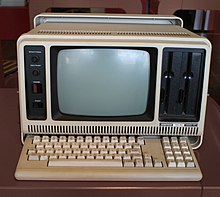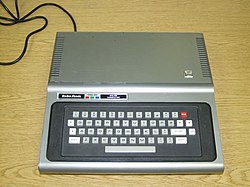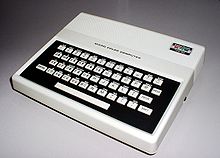Commodore 64
Commodore 64 is an 8 bit personal computer developed by Commodore International in August 1982 at a starting price of $595
It is the successor to the Commodore VIC-20 and the Commodore MAX Machine, featuring 64 kilobytes (65,536 bytes) of RAM, with graphics and sound far above other equipment of its time

Description
Commodore 64 became the best selling personal computer model of all time, according to the Guinness Book of World Records
It is commonly named as C64; other less common names include CBM 64/CBM64, C = 64
Its casing has been affectionately nicknamed “breadbox” and “bullnose” due to its shape
Over the lifespan of the Commodore 64 (between 1982 and 1994), sales totaled around 17 million units
Unlike computers that were distributed only through authorized distributors, Commodore also targeted department stores and toy stores
The unit could be plugged directly into a television for gaming, giving it much of the appeal of dedicated video game consoles like Atari 2600
Its affordable price contributed to the crash of the video game market in 1983
Approximately 10,000 commercial software titles were manufactured for the Commodore 64, including development tools, office applications, and games
The machine is also credited with the popularization of the scene Demo for the computer
The Commodore 64 is still used by many computer enthusiasts and there are emulators that allow anyone with a modern PC to run any of those programs on their desktop (with varying degrees of success and functionality)
History
Sources
In January 1981, MOS Technology, Inc., the integrated circuit design subsidiary of Commodore, began a project for the graphic design and audio chips for a next generation video game console
Design work on the chips, called MOS Technology VIC-II (graphics) and MOS Technology SID (audio), was completed in November 1981
The new game console, which would use the new chips, would be called Ultimax or alternatively Commodore MAX, designed by Yashi Terakura of Commodore Japan
The project was eventually cancelled after only a few machines were manufactured for the japanese market
At the same time, Robert Russell (VIC-20 systems programmer and architect) and Robert “Bob” Yannes (SID engineer) criticized Commodore's product line, which was a continuation of the Commodore PET line, aimed at enterprises
With the support of Al Charpentier (VIC-II engineer) and Charles Winterble (MOS Technology manager), they proposed to Commodore CEO Jack Tramiel a true low-cost replacement for the VIC-20
Tramiel dictated that the machine should have 64KB of RAM
Although 64 kB of DRAM cost over $100 at the time, I knew that DRAM prices were falling, and would soon fall to an acceptable level before full production was reached
In November, Tramiel set the deadline for the first weekend in January, coinciding with the 1982 Consumer Electronics Show
The product received the code name of the VIC-40 as the successor to the popular VIC-20
The team that built it consisted of Robert Russell, Robert "Bob" Yannes, and David A. Ziembicki
The design, prototypes and some sample programs were completed in time for the show, after the team had worked tirelessly over the Thanksgiving and Christmas weekends
When the VIC-40 was introduced it was renamed C64 to fit Commodore's commercial product line which included the P128 and B256, both named by a letter and their respective memory sizes
The C64 made an impressive debut, as production engineer David A. Ziembicki recalled:
“All we saw at our booth were Atari people with their mouths dropping open, saying, How can you do that for $595?”
The answer was:
“It turned out to be vertical integration: thanks to Commodore owning the semiconductor manufacturing facilities of MOS Technology, each C64 has an estimated production cost of only $ 135″
Winning the war of market
The C64 faced off against a wide range of competing personal computers at its introduction in August 1982
With an impressive price tag along with the C64's advanced hardware, it quickly surpassed many of its competitors.
In the United States, its most important competitors were Atari 400/800, IBM PC and Apple II
The Atari 400/800 was very similar in terms of hardware, but was very expensive to build, forcing Atari to redesign your machine to make it more profitable
This gave rise to the 600XL/800XL line and the transfer of its production to the Far East
IBM PC and Apple II they were not comparable to the graphics and sound capabilities of the C64, but were more expandable thanks to their internal expansion slots, a feature the C64 lacked
All three machines had a standard 16K memory configuration, 48K less RAM than the C64
IBM PC and Apple II costaban $1,500, eran 3 veces más caros, mientras que el Atari 800 It was only $899
One of the keys to the C64's success was Commodore's aggressive marketing tactics, and they were quick to exploit the relative cost/performance divisions among their competitors with a series of television advertisements after the C64's launch in late 1982
Commodore sold the C64 not only through its network of authorized dealers, but also placed it on the shelves of department stores, discount stores, and toy stores
Since it had the ability to output composite video, it did not require a specialized monitor and could be connected to a television
This allowed it (like its predecessor, the VIC-20) to compete directly against video game consoles such as the Atari 2600
The C64's aggressive pricing is considered a major catalyst in the 1983 video game crash
Since Commodore offered a $100 refund in the United States for the purchase of a C64 when receiving any computer or video game console
To take advantage of the $100 rebate, some distributors and mail-order retailers offered a Timex Sinclair 1000 for as little as $10 with the purchase of a C64 so the consumer could send the computer to Commodore, collect the rebate and keep the difference
Timex Corporation out of the market the following year
The success of the VIC-20 and C64 contributed significantly to the output of the TI-99/4A from Texas Instruments and other competitors of the sector
In 1984, Commodore released the Commodore Plus/4 which offered a superior color display, better implementation of BASIC (V3.5) and embedded software
However, Commodore made what was perceived by critics and consumers as a major strategic mistake by being incompatible with the C64
To make matters worse, the Plus/4 lacked the hardware capability for sprites and had much poorer sound, so it greatly underperformed in two of the areas that had made the C64 the star
In the United Kingdom, the C64's main competitors were the Sinclair ZX Spectrum, of British manufacture, and the Amstrad CPC464
Released a few months before the C64 and with sales at almost half the price, the Spectrum quickly became the market leader
Commodore had an arduous fight against Spectrum, since I could not rely on undercutting the competition
The C64 debuted at £399 in early 1983, while the Spectrum cost £175
The C64 would later compete with the Spectrum in popularity in the second half of the 1980s, and eventually survived the Spectrum (which was discontinued in 1992)
Despite all attempts by Commodore to discontinue the C64 in favor of other higher priced machines, constant demand made its discontinuation a difficult task
In 1988, Commodore sold 1.5 million C64s worldwide
Although demand for the C64 dropped in the united States
In 1990, it continued to be popular in the United Kingdom and other European countries
In the end, economics, not obsolescence, sealed the fate of the C64
In March 1994, at CeBIT in Hanover, Germany, Commodore announced that the C64 would eventually be discontinued in 1995, stating that the C64's disk drive was more expensive to manufacture than the C64 itself
Although Commodore had planned to discontinue the C64 in 1995, the company declared bankruptcy a month later, in April 1994
The family C64
1982: Commodore released the machine Commodore MAX in Japan
It is called the Ultimax in the united States and VC-10 in Germany
The MAX was intended to be a gaming console with computing power limited
It was discontinued months after its release, due to poor sales in Japan
1984: Commodore launched the SX-64, a portable version of the C64
The SX-64 had the distinction of being the first portable computer to full color
The base unit had a 5-inch (127 mm) CRT and an integrated 1541 floppy drive
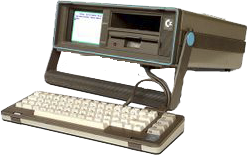
1985: Commodore was determined to avoid the problems of the Plus/4, ensuring that the successors to the C64 (the Commodore 128 and 128D computers) were as good and fully compatible with the original
Offering a host of enhancements (such as structured BASIC with graphics and sound commands, 80-column display capability, and full CP/M support)
1986: Commodore released the Commodore 64C computer (C64C), which was functionally identical to the original, but whose exterior design was remodeled in the more elegant style of the C128 and other design trends in the United States of that time
The C64C is often included with the operating system based on GUI GEOS third party
The Commodore 1541 disk drive was also remodeled, resulting in the 1541-II
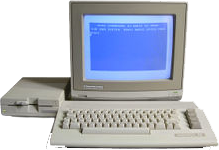
1990: The C64 was re-released as a game console, called the C64 Gaming System (C64GS)
We performed a simple modification of the base plate of the C64C to orient the connector of the cartridge to a vertical position
This allowed for the insert cartridges from the top
A ROM modified replaced the BASIC interpreter with a boot screen to inform the user that was supposed to insert a cartridge
The C64GS was another commercial failure for Commodore, and was never released outside of Europe
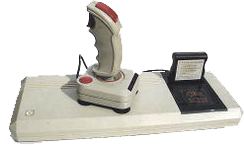
A prototype was made for an advanced successor to the C64, the Commodore 65 (also known as "C64DX"), but the project was canceled by Commodore president Irving Gould in 1991
The C65's specs were very good for an 8 bit computer
For example, it could display 256 colors on the screen, while the Amiga, based on OCS, it could only display 64
Although no specific reason was given for the cancellation of the C65, it appeared that it was a conflict of interest with the Amiga low end
The Amiga 600 It was launched in mid-1992, eventually taking the place of the C65 as an advanced successor to the C64
C64 hardware clones
In the summer of 2004, after an absence from the market of more than 10 years, computer manufacturer Tulip Computers BV (owners of the Commodore brand since 1997) announced the C64 Direct-to-TV (C64DTV), a game console for TV with joystick, based on the C64 with 30 games built into its ROM
It was designed by Jeri Ellsworth, a self-taught computer designer who had previously designed the modern C-One C64 implementation
The C64DTV was similar in concept to other mini consoles based on Atari 2600 and Intellivision which had gained modest success earlier in the decade
The product was advertised on QVC in the United States for the 2004 holiday season
Some users installed 1541 floppy drives, hard drives, secondary joysticks and keyboards in these units, giving DTV devices almost all the capabilities of a full Commodore 64
DTV hardware was also used in the Hummer mini game console, sold at Radio Shack in mid-2005
Since 2006, C64 enthusiasts continue to develop new hardware, including Ethernet cards, specially adapted hard drives, and flash card interfaces
A scene Demo active
At the time of its introduction, the C64's graphics and sound capabilities were comparable only to the family Atari 8 bit
This was at a time when most IBM and compatible PCs had text only graphics cards, green screen monitors, and sound consisted of clicks and beeps from a low-quality built-in speaker
Due to its advanced graphics and sound, the C64 is often credited with starting the computer subculture known as demoscene
The C64 lost its top position among Demos programmers when the Atari ST and Commodore Amiga 16 bit in 1985, however, remained a very popular platform for Demos coding until the early 1990s
At the beginning of the millennium, it was still actively used as a machine for Demos, especially for music (its sound chip is used in special sound cards for PCs)
Unfortunately, the differences between the C64 PAL and NTSC caused compatibility problems between the C64 in the United States, Canada, and those in most other countries
The vast majority of the Demos could only be run on machines PAL
Software
Commodore 64 amassed a large software library of nearly 10,000 commercial titles, rivaled in its day only by the Apple II family (an emulation unit Apple II+ based hardware called The Spartan, manufactured by Mimic Systems Inc., was available for the C-64 for a short time, but never became very popular)
BASIC
Unfortunately, the built-in BASIC programming language did not offer an easy way to take advantage of the machine's advanced graphics and sound capabilities
To access the associated memory addresses to make use of the advanced functions, it was required to use the PEEK and POKE commands, which were third-party BASIC extensions, such as Simons' BASIC, or to program in the assembler
Commodore had a better implementation of BASIC, but chose to ship the C64 with the same BASIC 2.0 used in the VIC-20 to minimize its cost
However, this did not stop countless people from making thousands of programs in the BASIC V2 language and giving their first programming lessons to other people
Development tools
Aside from games and office applications such as word processors, spreadsheets, and database programs, the C64 was well equipped with development tools from Commodore and other vendors
The assembler MIKRO came in cartridge form and integrated seamlessly with the standard BASIC screen editor
Several companies sold compilers for BASIC, C, and Pascal, and a subset of Ada, to name a few of the most popular languages available for this machine
The most popular entertainment-oriented development suite was the Shoot'Em-Up Construction Kit, affectionately known as SEUCK, which allowed those who were not coding experts to create original, professional-looking shooter games
Garry Kitchen's Gamemaker and Arcade Game Construction Kit also allowed non programmers to create simple games with little effort
Conversational Adventure game tools included The Quill and Graphic Adventure Creator development suites
Pinball Construction Set gave users the ability to design pinball machines
Games
No mention of the Commodore 64 would be complete without its games
Due to the quality and quantity of games written for this computer (thanks in part to advanced sound and graphics hardware), it became known primarily as a platform for gaming and home entertainment, rather than a serious business computer
The Commodore 64 user base encouraged commercial companies to flood the market with gaming software, even until Commodore's demise in 1994
Perhaps the most striking aspect of Commodore 64 gaming history is the sheer number of titles created for the machine
In total there are over 20,000 game titles exclusive to the Commodore 64, perhaps the largest catalog of games for any computer or gaming console to date, and easily rivals the number of games produced for the ZX Spectrum
Commodore did not publish many games itself for the C64, instead releasing game cartridges primarily from their failed MAX machine for the C64
Commodore included an “Ultimax” mode in the Commodore 64 hardware, which allowed the computer to emulate a MAX machine for this purpose
Commodore's most notable contribution to the C64 gaming tradition in that early era was perhaps the "International Soccer" game cartridge, which stood the test of time, even undergoing conversion to floppy disk and upon rerelease, its sales were older
However, apart from the initial Commodore cartridges, very few cartridge based games were released for Commodore
Most third-party game cartridges came from Llamasoft, Activision, and Atarisoft, however, some of these games also came to have disc and tape versions.
Only later, when the C64GS console failed, did cartridges make a brief comeback, including producing a few more cartridge only games
The crackers managed to transfer these games to discs, years later
For the most part, it was common for packaged commercial game software to come in either a floppy disk or a tape format, and sometimes both
Cassette-based games were generally cheaper than their disc based counterparts; However, due to the Datasette's lack of speed and random access, many long games (such as role-playing games) were never created for the cassette format
Game enthusiasts Commodore is divided mainly between those who had spent money in the purchase of a floppy drive and those who suffered with the limitations of the Datasette cheapest
Despite this, a large amount of software was produced on cassettes, including many "budget" games produced by companies such as Mastertronic, Firebird and Codemasters, which were released only on cassettes and sold for a fraction of the price of commercial software
While many commercial software companies produced packaged game software, a plentiful supply of free software was also available
Given the accessibility of BASIC on the Commodore 64, many BASIC games were also converted from other computer platforms and modified for the Commodore 64
Typographic programs were published in books and magazines, and public domain software was developed
Both launching from systems BBS and public domain libraries such as “Binary Zone” in the United Kingdom
There are many classic games for the Commodore 64, perhaps too many to mention, including ports of classic arcade games
Of note is the successful Impossible Mission produced by Epyx, which was originally designed for the Commodore 64
Epyx's multi-event games (Summer Games, Winter Games, World Games and California Games) were very popular, as was perhaps the first driving game with Split Screen Dynamics, Pitstop II
Most of these games finally appeared on the Commodore DTV joystick many years after
Other successful games that received versions for the Commodore 64 were Boulder Dash, The Sentinel, Archon and Elite
Cassette users will be able to remember titles such as Master of Magic, One Man and His Droid and Spellbound under the Mastertronic label
Other notable Commodore 64 titles included the Ultima and Bard's Tale role playing game series
Hewson/Graftgold were responsible for several well-received titles on the C64, including Paradroid and Uridium, which became famous for their metallic bas-relief style graphics effects and addictive gameplay
System 3 produced The Last Ninja action adventure series originally for the C64
Armalyte, an innovative shoot'em up title from Thalamus Ltd, and Turrican I and II are among some of the highest-rated games for the Commodore 64 (according to Zzap64, which awarded “Gold Medals” to these games)
Some notable game designers for the Commodore 64 are: Paul Norman, Dan Bunten (aka Danielle Barry), Andrew Braybrook, Stephen Landrum, Tim and Chris Stamper, Jeff Minter, and Tony Gibson, just to name a few
During the Commodore 64's final marketing years, Commodore Format magazine gave the only 100% rating given to a Commodore 64 game
As no game had been rated this highly before, and as the Commodore 64 commercial scene was shrinking in the mid-1990s, the 100% award was considered somewhat controversial
The game, titled Mayhem in Monsterland, was developed to fully exploit a multitude of programming tricks and quirks in the Commodore 64 hardware
The stunning use of non standard colors and scrolling was perhaps the most graphically impressive game ever produced for the Commodore 64
The game itself is similar to that of Nintendo Super Mario Bros and Sonic the Hedgehog Sega
While most of the commercial gaming activity no longer exists for the C64, many enthusiasts and hobbyists are still writing games for the platform today
History of the games
1983: although the C64 was actually a computer, its most widespread use was computer games
It was designed with that idea in mind, with support for sprites, music, joysticks and everything else needed
Like video game consoles, it had a cartridge slot
The first games for C64 were produced by well known video game production companies such as Atari and Activision, released as cartridges in the style of the first video games of the 80s
Most of them were conversions of arcade games that were successful
They were also limited by the amount of ROM on the cartridges, which was typically between 8 and 16 kBytes
Donkey Kong, Ms. Pac-Man, Pitstop, and Q*Bert are examples of console video games that were converted to the C64
Graphically, the C64 conversions were on par or even better than the versions for the best consoles of the time, the Atari 5200 and the ColecoVision
1984-1985: After the video game crash in 1983, many of the old producers left the business, the world of C64 games changed
At the same time, floppy disk drives and Datassette tape recorders became widespread
They had three advantages over the old cartridges:
- create games on floppy disk or tape there were programming tools available for the C64 user
- reduction of initial investment new producers had it easy since the media was cheaper to replicate
- 160 kByte storage a gap that was much larger than in most cartridges
Consequently, many new companies like Graftgold were created and developed innovative games like Paradroid
Many of these new companies were European, especially British
Role-playing games like The Bard's Tale were spread across multiple discs, allowing for large games with many more graphics than cartridge based games
1985 was the year “SID artists” began pushing the Commodore 64 SID to its limits
Video game producers released more complex games such as Archon, Ghostbusters and Impossible Mission
1987: the C64 reached its maximum popularity
Most of its best-known C64 games, such as Pirates!, Maniac Mansion, and Wizball, were released this year
Después de 1987: the market for C64 was fading slowly
16-bit computers were much more powerful, like the Commodore Amiga, were available for two years and made cheap
Still, some of the most spectacular games were released after 1987
International 3D Tennis was one of the few 3D games, even if it was only with wireframe players
SimCity provided the simulation of a relatively complex city through a conversion for the C64, although it was a fairly simplified version
Thalamus games were known for pushing the C64 hardware to its limits until the 1990s
Applications, utilities and software for companies
Many companies did not take the Commodore 64 seriously as a business machine
It was still widely used for many important tasks, including creating computer graphics, desktop applications, and word processing
The best known art package was perhaps KoalaPainter, mainly due to its proprietary user interface with custom graphics tablet: the KoalaPad
Another quite popular drawing program was Doodle!
There was a Commodore 64 version of The Print Shop, which allowed users to generate signs and banners with a printer
“The Newsroom” was a suite for desktop applications
Lightpens and computer-aided design software were also produced commercially, such as the Inkwell Lightpen and related tools
There were many word processors available for the Commodore 64, but the best program for the price was SpeedScript, which was actually an input program from Compute!'s Gazette
Microsoft's commercial spreadsheet application called MultiPlan was ported to the Commodore 64, where it competed against packages such as Calc Result
There was a whole office suite of production british call Mini Office II
In Germany and Scandinavia, many popular application programs were published by the German company Data Becker
Serious business Commodore 64 users, however, were attracted to GEOS
Due to its speed, ease of use, and full suite of office applications and utility software, GEOS provided a work environment similar to that of an Apple Macintosh
Arguably the best office applications appeared in GEOS because it was graphically advanced and not limited by the Commodore 64's 40 column screen area
Being a full-fledged operating system, GEOS brought the arrival of many additional fonts, accessories and applications
It was also compatible with most Commodore 64 peripherals and third-party printer models
KoalaPad and Lightpen users could also use GEOS, which greatly increased the number of clipart images available for the platform
GEOS proved to be very popular due to the low price of the necessary hardware (and, of course, the capabilities of the operating system itself)
This was due in part to the aggressive pricing of the Commodore 64 as a gaming machine and as a personal computer (with the rebate campaign, the C64 cost as little as $100 at the time)
Compared to a typical PC for $2000 (which required MS-DOS and another $99 for Windows 1.0) or the venerable Mac 512K Enhanced which cost about $2000
There were numerous sound editing tools for Commodore 64
Commodore released music composition software that included a keyboard overlay suitable for the first Commodore 64s model
Software titles, such as Music Construction Set, were available for users to compose music with notes
However, the only tools that really boosted the C64's sound capabilities were mostly demoscene music tools, or pure assembly language tools
The cartridges of expansion MIDI hardware and speech synthesis were also available for the musicians to more serious
The Prophet64 cartridge, which began development in 1996 and was released in 2004
It featured a set of GUI style applications for music sequencing, drum and rhythm synthesis, MIDI DIN synchronization, and taking advantage of the SID chip in other ways
Turning the C64 into a true musical instrument that could be used by anyone
There was also software that could be used to make the Commodore 64 talk, known as SAM (Software Automatic Mouth)
Franchises
Some of the franchises that became popular in C64:
Franchises
| Name |
Company |
Year |
| Commodore 64 BASIC |
Commodore |
1982 |
| Donkey Kong |
Atarisoft |
1983 |
| Ms. Pac-Man |
Atarisoft |
1983 |
Pitstop |
Epyx |
1983 |
| Q*Bert |
Parker Brothers |
1983 |
| Koala Painter |
Koala/Audio Light |
1983 |
| Magic Desk I |
Commodore |
1983 |
| Multiplan |
Microsoft |
1983 |
| Vizawrite |
Viza Software |
1983 |
| Archon |
Electronic Arts |
1984 |
| Boulder Dash |
First Star/Micro Fun |
1984 |
| Ghostbusters |
Activision |
1984 |
| Tournament Tennis |
Imagic |
1984 |
| Zaxxon |
Synapse Software |
1984 |
| Impossible Mission |
Epyx |
1984 |
| Winter Games |
Epyx |
1985 |
| The Bard’s Tale |
EA/Interplay |
1985 |
| Hardball |
Accolade |
1985 |
| Paradroid |
Graftgold/Hewson |
1985 |
| GEOS |
Berkeley Softworks |
1986 |
| California Games |
Epyx |
1987 |
| Great Giana Sisters |
Rainbow Arts |
1987 |
| International Karate + |
System 3 |
1987 |
| The Last Ninja |
System 3 |
1987 |
| Maniac Mansion |
Lucasfilm Games |
1987 |
| Pirates! |
Microprose |
1987 |
| Rampage |
Activision |
1987 |
| Wizball |
Ocean/Sensible |
1987 |
| Bubble Bobble |
Firebird |
1987 |
| Buggy Boy |
Elite/Tatsumi |
1987 |
| geoWrite |
Berkeley Softworks |
1987 |
| Armalyte |
Thalamus |
1988 |
| geoPaint |
Berkeley Softworks |
1988 |
| SimCity |
Broderbund/Infogrames |
1989 |
| International 3D Tennis |
Sensible Software |
1990 |
| Creatures II |
Thalamus/Apex |
1993 |
Fonts, bulletin boards and floppy magazines
In addition to commercial packaged software, the C64, like the previous VIC, had a large library of typesetting programs
Numerous computer magazines offered typographic programs, usually written in BASIC, assembly language, or a combination of both
Due to its immense popularity, many general purpose magazines writing about other computers offered C64 type inserts (Compute! was one of them)
And in its heyday, there were many North American magazines (Ahoy!, Commodore Magazine, Compute!'s Gazette, Power/Play, RUN and Transactor) dedicated exclusively to Commodore computers
These magazines sometimes had disk supplement subscriptions available for an additional cost
The programs were stored on the disk, to avoid the user having to write them
The Loadstar disc magazine offered fairly elaborate ready-to-run programs, music and graphics
Type books were also common, especially in the early days of the machine
A large library of public domain and free programs also emerged, distributed by online services such as Q-Link and CompuServe, BBS and user groups
Despite limited RAM and disk capacity, the Commodore 64 was a popular platform for hosting BBS (Bulletin Board Systems)
One of the most popular was the Color64 BBS system, which allowed the use of color graphics with the PET-ASCII system
Software piracy
The market for software C64 had problems with widespread piracy of software
This was perhaps due to a number of significant factors
The efforts of the groups warez to remove the copy protection of software were probably the main factors that contributed to the rampant piracy in the software
The Commodore 64's large user base, in addition to encouraging software companies to develop for its huge market, possibly also attracted software pirates who attempted to amass large libraries of pirated software
Many BBS They offered cracked commercial software, which sometimes required special access, and usually required users to maintain an upload/download ratio
A large number of warez groups existed, including Fairlight, which continued to exist more than a decade after the demise of the C64
Some members of these groups resorted to telephone and credit card or phone card fraud to make long-distance calls, either to download new titles that were not yet available locally or to load titles newly cracked by the group
However, not all Commodore 64 users had a modem
For these people, many warez “swapper” groups maintained contacts around the world
These contacts normally were sending diskettes massive pirated goods through the postal service
Additionally, and perhaps quite naturally, sneakernets existed in schools and companies around the world, as friends and colleagues exchanged (and usually later copied) their software collections
Before the Internet spread, this was the only way many users could amass huge libraries of pirated software
Particularly in Europe, groups were created explicitly to copy software, usually regardless of the software license
Several utilities were sold that contained custom routines to defeat most commercial software copy protection schemes, the most well known being Fast Hack'em
Tapes could be copied with special software, but this was often done by simply copying the cassette into a dual-deck tape recorder, or relying on an Action Replay cartridge to freeze the program in memory and save it to the cassette
Games game cracks could often be copied manually without any special tool
Hardware
Graphics
The C64 used the 6510 MOS Technology 8 bit microprocessor (a close derivative of the 6502 with an added internal 6 bit I/O port that was used for two purposes: to swap processor address space in ROM, and to operate the data tape recorder) and had 64 kilobytes of RAM, of which 38 kB were available for the built-in Commodore BASIC 2.0
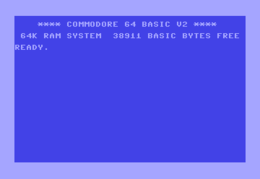
The VIC-II graphics chip featured 16 colors, 8 sprites, scrolling capabilities, and two bitmap graphics modes
The standard text mode included 40 columns, like most Commodore PET models; the built-in font was not standard ASCII but PETSCII, an extension of ASCII-1963
Computer game and Demos programmers quickly learned how to exploit the more esoteric features of the VIC-II for additional capabilities, such as making more than 8 sprites appear and moving them simultaneously
Sound
The SID sound chip had three channels, each with its own ADSR envelope generator, and with several different waveforms, ring modulation and filter capabilities
It was very advanced for its time and was designed by Bob Yannes, who would later co-found the synthesizer company Ensoniq
Yannes criticized other chips of computer sound contemporary as
Primitive, obviously designed by people who knew nothing about music
Often a game's music made it a hit with C64 users
Some well-known composers and programmers of C64 game music included Rob Hubbard, David Whittaker, Ben Daglish, and Martin Galway, among many others
Due to the chip's limitation to three channels, chords were typically played as arpeggios, coining the C64's signature lively sound
There were two versions of the SID chip, the first was the MOS Technology 6581, which was found in all the original C64 breadboxes, and the earlier versions of the C64C and the Commodore 128
Later replaced by the MOS Technology 8580 in 1987
On the 6581 the sound quality was a little clearer and many Commodore 64 fans still prefer its sound
The main difference between the 6581 and 8580 was the voltage supply: the 6581 used a 12 volt supply, while the 8580 only required 9 volts
A voltage modification could be made to use a 6581 on a C64C board (which used 9V)
The SID chip had a distinctive sound that kept many followers
In 1999, the Swedish company Elektron produced a SidStation synthesizer module, built around the SID chip, using remaining stock of the chip
Several musical groups used these devices in their music
Like Machinae Supremacy, a band from Luleå (Sweden) that presents a slight fusion between metal, alternative rock and electronic music (mainly 8 bit and Chiptune)
Their style is defined by themselves as SID metal, taking advantage of the sounds of the SID chip of old Commodore computers
Or also Goto80 (Anders Carlsson), Swedish musical artist and researcher
He has been described as one of the key players between glitch and chipmusic, as well as an active demoscener
At the turn of the millennium, he was one of the first to bring chip music to a wider audience and was also an early adopter of Game Boy live music
Has an extensive catalog of free music (often open source) with a wide range of musical influences
He currently focuses on research and art, and maintains several blogs and labels such as Chipflip and Tumblr in text mode
Hardware revisions
The cost reduction was the driving force for hardware revisions to the motherboard of the C64
Reducing manufacturing costs was vital to Commodore's survival during the price war and lean years of the 16 bit era
The original C64 motherboard (NMOS-based) would go through two major redesigns, (and numerous sub-revisions) swapping positions of the VIC-II, SID and PLA chips
Initially, much of the cost was reduced by reducing the number of discrete components used, such as diodes and resistors
VIC-II was manufactured using 5 micrometer NMOS technology, with a clock speed of 8 MHz
At such a high clock speed, it generated too much heat, forcing MOS Technology to use a ceramic DIL package (called “CERDIP”)
The ceramic package was more expensive, but dissipated heat more effectively than the plastic
After a redesign in 1983, the VIC-II was enclosed in a DIL plastic package, which reduced costs substantially, but did not eliminate the heat problem
Without a ceramic package, the VIC-II required the use of a heatsink
To avoid additional cost, metal RF shielding doubled as the heat sink for the VIC, although not all units produced had this type of shielding
Most C64s in Europe were released with a cardboard RF shield, covered with a layer of metal foil
The effectiveness of the cardboard was highly questionable, and worse still, it acted as an insulator, blocking the airflow that trapped the heat generated by the SID, VIC and PLA chips
SID was manufactured using NMOS at 7 and in some areas at 6 micrometers
The SID prototype and some very early production models featured a ceramic DIL package, but unlike the VIC-II, these were extremely rare, as the SID was encased in plastic when production began in early 1982
In 1986, Commodore released the latest revision of the “classic” C64 motherboard
The design was identical to that of 1984, except that it now used two 64 kbit × 4 DRAM chips instead of the original eight 64 kbit × 1 chips
After the release of the C64C, MOS technology began to reconfigure the C64 chipset to use HMOS technology
The main benefit of using HMOS was that it required less voltage to drive the IC, which consequently generated less heat
This improved the overall reliability of the SID and VIC-II
The new chipset was renumbered to 85xx to reflect the change to HMOS
In 1987, Commodore launched the C64Cs with a completely redesigned motherboard, commonly known as a "short board"
The new board used the new HMOS chipset, with a new 64-pin PLA chip
The new “SuperPLA,” as it was nicknamed, integrated many discrete components and TTL chips
2114 color RAM was integrated into the latest PLA revision
Energy problems
The C64 used an external power source
While saving valuable space inside the computer case, the supply itself was barely adequate for the C64's power requirements and occasionally failed due to overheating
Some users bought third-party power supplies that are more resistant and better refrigerated
Throughout the life of the Commodore, third-party power supplies became increasingly important when used in conjunction with Creative Micro Designs peripherals
Of particular note, a C64 coupled with a RAM expansion or CMD SuperCPU required more power than provided by its original power supply
Peripheral
Storage
Tape drives
In the United States, the 1541 floppy drive was very widespread
By contrast, in Europe, the C64 was often used with cassette tape drives (Datassettes), which were much cheaper, but also much slower and less reliable than floppy drives
Datassette worked similar to a 300 baud modem, converting analog audio sounds to digital format
It plugged into a proprietary cassette port on the Commodore 64 motherboard
With this unit you could use audio cassettes virgin standard
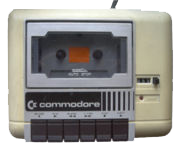
Datasette speed was incredibly slow (around 300 baud)
Loading a large program at normal speed could take up to thirty minutes in extreme cases
Many European software developers wrote their own tape fast loaders that replaced the C64's internal KERNAL code and offered load times often faster than standard speed floppy disks
Novaload was perhaps the charger tapes most popular used by most developers of software british and americans
Early versions of Novaload had the ability to play music while a program was loaded into memory, and was easily recognizable by its black border and digital sounds on loading
Other fast loaders included loading screens, which showed the user some nice illustrations while the program loaded
Fast chargers are more advanced included mini-games for the user to play while it loaded the program
One of these quick-loading minigames was Invade-a-Load, a small clone of the famous Space Invaders game
In addition to speed problems, Datasette users had to deal with interference caused by magnetic fields
Problem not unlike that of floppy drive users, the Datasette read head often got dirty or slipped out of place
This meant that many tapes produced errors to half of the loaded with great programs
A small screwdriver could be used to return the tape heads to their places, some companies sold several commercial kits to adjust the alignment of the Datasette heads
As the Datasette lacked random read and write access, users had to rely on a numerical counter to find the starting location of programs within the cassette
An optional transmission tape drive, based on the QIC-02 format, was made available for the Xetec Lt. Kernal hard disk subsystem
An optional streaming tape drive, based on the QIC-02 format, was available for the Xetec Lt. Kernal hard drive subsystem
Very few were sold, probably due to their high price
Floppy drives
Normally not supplied with the machine, 5¼ inch (Commodore 1541 and 1571) and, later, 3½ inch (1581) floppy drives became available from Commodore
The 1541 was the standard floppy drive for the Commodore 64, almost all disk-based programs were released on a floppy disk format compatible with the 1541
The 1541 was extremely slow when loading programs due to a poor implementation of the serial bus, a legacy of the Commodore VIC-20
A widespread joke advised users to “go get a cup of hot chocolate milk” after inserting a program load command into the C64

The 1541 floppy drive was notable not only for its physical size compared to the C64, but also for its unreliability
The most common failure was caused by the disk read/write head mechanism
Many software copy protection schemes used data stored on non-standard floppy disk tracks, forcing the drive head, while reading the data, to search for a zero, causing the head to hit a mechanical stop
This caused a loud, loud bang and over time often misaligned the head mechanism, resulting in reading errors and the need for repair
Some demos exploited it to force the floppy drive to play crude tunes (one of them was Bicycle Built For Two) by varying the way the mechanism was hit
Additionally, as with the C64, the 1541 units tended to overheat because their design did not allow for adequate cooling (a small fan was often attached to the case)
Many of the 1541's design problems were rectified with Commodore's 1541-II floppy drive, which was 100 percent compatible with the older 1541 lumbering hippo
Because the power supply was not located inside the drive case, the size of the 1541-II was significantly smaller and it did not overheat
In the following example, where "*" designates the last program loaded or the first program on disk, '8' is the floppy drive number, and the '1' means that the file should not be loaded from the standard memory address, you must do it from where the program header tells you what address it is saved at
This type of programming is used in machine language programs, but not in BASIC programs
Long after the introduction of the 1541, third-party developers demonstrated that the operations of this floppy drive were notoriously slow, and were able to fix this with clever software that took control of the serial bus signal lines and implemented an improvement in the transfer protocol between computer and floppy drive
In 1984, Epyx released its FastLoad cartridge for the C64 that replaced some of the 1541's slow routines with its own custom code, allowing users to load programs in a fraction of the time (~1/5th)
Despite being incompatible with the copy protection schemes of many programs, the cartridge became so popular among grateful C64 owners (probably the most widespread third-party upgrade for the C64 of all time) that many Commodore dealers sold the Epyx cartridge as a standard item when selling a C64 that included a 1541
As a free alternative to FastLoad cartridges, numerous pure software turbo-loader programs were also created that were loaded into RAM every time the computer was restarted
The best of these turbo-loaders was able to speed up the time required to load a program from the floppy drive by a very notable factor of 20x, demonstrating the inadequacy of the default bus implementation
Since turbo-loader programs were relatively small, it was common to put one on each floppy disk so they could be quickly loaded into RAM after rebooting
The 1541 floppy drive contained a 6502 MOS processor acting as the drive controller, along with an embedded disk operating system (DOS) in ROM and a small amount of RAM, the latter used primarily as buffer space
Since this arrangement was, in effect, a specialized computer, it was possible to write custom driver routines and load them into the RAM of the disks, making those disks operate independently of the C64
There were many software packages that took advantage of it; For example, some backup software allowed users to make multiple disk copies directly between drives in a chain without a C64
Several third-party developers sold a standard IEEE-488 parallel bus adapter for the C64, which plugged into the machine's expansion port
Apart from users of BBS, few took advantage of it, and the IEEE devices that Commodore sold (the 1 megabyte, 5 inch SFD-1001 floppy drive, and peripherals originally made for IEEE-equipped PET computers, such as the 4040, 8050 floppy drives, and 9060/9060 hard drives) 9090)
As an alternative to the poor performance of the 1541 or the relatively expensive IEEE bus adapter and associated peripherals, several third-party serial bus units appeared that often offered higher reliability, higher performance, quieter operation, or simply a lower price than the 1541
Although often at the expense of software compatibility due to the difficulty of reverse engineering, the DOS built into the 1541's hardware (Commodore's IEEE-based drives faced the same problem)
Like the IEEE-488 interface, the serial bus offered the ability to daisy chain hardware, that is, one device (disk drive or printer) would connect to the Commodore 64 and the others would connect to each other in sequence
This led Commodore to produce (through a third party) the Commodore 4015, or VIC-switch
This (rarely used) device allowed up to 8 Commodore 64s to be connected to the device along with a number of peripherals, allowing each computer to share the connected hardware
It was also possible, without requiring a VIC-switch, to connect two Commodore 64s to a 1541 floppy drive to simulate an elementary network
Allowing the two computers to share data on a single disk (if the two computers made simultaneous requests)
The 1541 worked admirably with one of them while returning an error message to the other, which surprised many people who expected a controller from the less stellar unit 1541 to crash or crash
This functionality also worked with mixed combinations of PET, VIC-20, and other 8 bit Commodore computers
Later, in the 1990s, Creative Micro Designs produced several powerful floppy drives for the Commodore 64
They included the FD series serial bus compatible 3.5" floppy drives (FD-2000, FD-4000), which were capable of emulating Commodore's 3.5" 1581
They also implemented a native-mode partition that allowed typical 3.5" HD floppy disks to store 1.6 MB of data, more than MS-DOS's 1.4 MB format
The FD-4000 had the advantage of being able to read, with difficulty, improved floppy disks
In addition, FD-series drives could partition floppy disks to emulate disk formats 1541, 1571, and 1581 (although, unfortunately, not the firmware of the emulated drive)
And a real time module could be mounted inside the drive to record the date in the files
Commercially, very little software was released in the 1581 disk format or the native CMD format
However, enthusiasts used this drive to transfer data between a typical MS-DOS PC and a Commodore using special software
There was another 3.5" floppy drive available for the Commodore 64
The "TIB 001" which was a 3.5" floppy drive that connected to the Commodore 64 via the expansion port, meaning that these drives were very fast
These devices were from a UK company, but unfortunately they were not exported to other countries
Hard drives
In early 1985, Fiscal Information Inc. of Florida demonstrated the Lt. Kernal hard disk subsystem for the C64
Lt. Kernal was revolutionary because it coupled a 10-megabyte Seagate ST-412 hard drive to an OMTI SASI smart controller, creating a high-speed bus interface to the C64's expansion port
The connection of the bus SASI to the C64 was accomplished with a host adapter designed to measure
Lt. Kernal was sold with a sophisticated minicomputer-like disk operating system (DOS) that, among other things, allowed a program to be run simply by typing its name and pressing the Return key
The TWO also included a function to access a random key that made it possible for an expert programmer to implement database style ISAM
In 1987, Xetec, Inc. took over the manufacture and distribution of the Lt. Kernal, introducing C128 support (including CP/M support)
The capacity of the standard drive was increased to 20 MB, with 40 MB optional, and the system bus was a small standard computer interface system, better known as SCSI (the direct descendant of SASI)
Lt. Kernall was the most technically advanced hard disk subsystem ever offered for Commodore 8-bit computers and was capable of a data transfer rate of over 38 kB per second (65 kB per second in C128 fast mode)
An optional multiplexer allowed Lt. Kernall to be shared by up to sixteen C64s or C128s (in any combination), using the round-robin programming algorithm that took advantage of the SCSI bus protocol's ability to handle multiple initiators and targets
Therefore, Lt. Kernall could be conveniently used with multiple computers, something that was not possible with other C64 compatible hard drives
Although production of Lt. Kernall ceased in 1991, fortunately, most of the components used in the original design were standard parts, making it possible to repair the units
In addition, several hobbyists were able to reverse engineer the host adapter and boot firmware
As a result, some subsystems of the Lt. Kernall continue to be used by hobbyists
Also available for the Commodore 64 was Creative Micro Designs' CMD HD series, available as CMDRKey
Like the Commodore 1541 floppy drive, the HD CMD could be connected to the Commodore 64's serial bus and could work independently of the computer with the help of its hardware
A CMD HD series unit included its own SCSI controller to operate its hard drive mechanism, as well as housing a real time module for recording the date in the files
The operating speeds of the CMD HD series drives weren't much faster than a 1541 floppy drive, but fortunately they were fully compatible with JiffyDOS
The faster parallel transfer was made possible by the addition of another CMD product, the RAMLink CMD and a special parallel transfer cable
With this arrangement, the system's performance doubled that of the Lt. Kernall
One advantage of CMD products was the compatibility with software, especially GEOS, that previous solutions lacked
Unfortunately, CMD missed the opportunity to develop a driver for the auxiliary port for the device's print spooler (as promised in the user manual)
Support for external SCSI devices (such as CD-ROM and Zip drives) was also lacking
SCSI devices could be plugged into the external SCSI port, but could not be used from the HD without experiencing difficulties
User operations of these hard disk subsystems were similar to those of Commodore floppy drives, with the inclusion of special DOS features to make better use of the drive's capabilities and to effectively manage the large increase in storage capacity (up to a maximum of 4 GB)
An unavoidable problem was that full 1541 compatibility could not be achieved, which often precluded the use of copy protection software, software turbo-loaders, or any software whose operation depended on an exact emulation of the 1541
The hobbyist created "IDE64 interface" was designed in the late 1990s, attached to the Commodore 64's expansion port and allowed users to connect common IDE hard drives, CD-ROMs and DVDs, ZiP floppy disk drives and LS-120s to their Commodore 64s
Later revisions of the interface board provided with a connector, compact flash additional
The performance of the IDE interface was comparable to RAMLink in speed, but lacked the intelligence of SCSI
Its main advantage lay in being able to use hard drives economical low-cost in place of the SCSI drives more expensive
1541 support wasn't as good as commercially developed hard disk subsystems, but it continued to improve over time
Input/Output
Serial communication
Similarly, since Commodore offered several inexpensive modems for the C64, such as the 1650, 1660, 1670, the machine also helped make the use of the modem popular for telecommunications
The 1650s and 1660s were at 300 baud, and the 1670s were at 1200 baud
The 1650 could only mark the pulse
The 1660 did not have a proprietary sound chip to generate ringtones, so a cable was needed from the monitor's audio output to connect to the 1660 so that the C64 sound chip could be used to generate the ringtones
The 1670 used a modified set of Hayes commands
In the United States, Quantum Computer Services (later America Online) offered an online service called Quantum Link for the C64 that included chat, downloads, and online gaming
In the UK, Compunet was a popular online service for C64 users (who required special Compunet modems) from 1984 until the early 1990s
In Australia, Telecom (now Telstra) ran an online service called Viatel and sold modems for the C64 to use with them
In Germany, restrictive rules on its state telephone system prevented the widespread use of modems, leading to the use of inferior acoustic couplers
Like the VIC-20, the C64 lacked an actual UART chip like the 6551 and used software emulation
This limited its maximum speed to an error prone 2400 bit/s
The cartridges with third-party UART chips offered better performance
Over the life of the Commodore 64, CMD developed two cartridges for serial communications for Commodore computers, the "Swiftlink" and the "Turbo 232"
The latter was capable of driving a 56k Hayes modem at full speed, allowing reasonable dial-up internet access speeds
The Retro-Replay expansion cartridge added the "Silver Surfer" serial card, which also enabled 56k modem connections
RAM expansions
Over the years, several RAM expansion cartridges were developed for the Commodore 64 and 128
Commodore officially produced several models of RAM expansion cartridges, collectively referred to as the 17xx REU series for Commodore
While these devices came in sizes of 128, 256, or 512 KiB, third-party modifications were quickly developed that could extend these devices to 2 MiB, although some of those modifications could be unstable
Some companies also offered services to upgrade professionally these devices
One disadvantage of the 17xx series devices manufactured by Commodore was that some required a heavy-duty power supply if used in a Commodore 64
Several third-party clones were developed, some of which were designed in such a way as to eliminate the need for a heavy-duty power supply
The other major disadvantage was that the RAM of those cartridges could only be accessed through a handful of hardware registers, rather than being CPU-addressable memory, and they didn't provide any sort of RAM disk functionality (although a utility disk was supplied) with some REUs, which provided a disk controller to load the RAM)
An exception popular to the disuse of REU was GEOS
GEOS made heavy use of a primitive form of software control of swap space, which tended to be slow when used exclusively with floppy disks or hard disks
With the addition of REUs, along with a small software driver, GEOS would use expanded memory instead of its usual swap space
Berkeley Softworks later developed its own 512 KiB RAM expansion cartridge, the GeoRAM
This device was purposely designed for use with GEOS, although some REU compatible programs were later adapted for use
Sometime later, GeoRAM was cloned by another company to form the BBGRAM device (which also had a battery backup unit)
CMD designed its own externally powered 1 or 2 MiB RAM expansion, marketed as the RAMDrive CMD, which was explicitly designed to be used as a RAM disk
Its main feature was that the external power supply kept the format and RAM contents safe and valid while the computer was turned off, as well as powering the device in any case
A driver was provided on the included utility disk to allow GEOS to use the RAMdrive as a normal "disk" drive
CMD later launched the RAMLink
This device worked similarly to the RAMDrive, but could tackle up to 16 MiB of RAM in the form of a REU, GeoRAM, and/or a 17xx series internal memory card, which also provided real time battery backup to record the date on files saved on it
It also had a battery backup, thus preserving the contents of the RAM
The controllers were provided with RAMLink to allow GEOS to use their memory as a swap space replacement or as a regular "disk" drive
CMD's Super CPU Accelerator that came later, could hold up to 16 MB of RAM directly addressable to the CPU
Unfortunately, no functionality or disk-based RAM was offered, nor was any existing software able to utilize the directly addressable nature of RAM
The exception was the drivers that were included with the drive to explicitly allow GEOS to use that RAM as a swap space replacement, or as a regular disk drive, as well as to make use of the acceleration offered by the drive
Input devices
Commodore produced joystick controllers for the Commodore 64, largely compatible with joysticks Atari, as well as paddles (which were not compatible with Atari)
Commodore's paddles were originally designed for the VIC-20, but unfortunately very few C64 sets were able to take advantage of them
Commodore joysticks were often ridiculed because they weren't particularly robust, especially for extreme gaming
Many gaming fans preferred third-party joysticks, while other fans even built their own joysticks and controllers for the Commodore 64, or modified controllers from other systems
While the Commodore 64 only had two joystick ports, fans built several different types of adapters for four ports
This allowed the use of up to four joysticks on a Commodore 64, with the right programming
However, few games were able to take advantage of them
Commodore tube two mouse models, the 1350 and the 1351
The 1350 was only capable of emulating a joystick, by sending quick signals about the direction of the joystick as it moved, and therefore was not very useful
The 1351 used a more traditional proportional mode, sending signals to the computer that told it the amount and direction of movement
The 1351 also supported an identical mode to the 1350
CMD's SmartMouse was compatible with the 1351 and also included a third button and a built-in real time module
There was also the NEOS mouse that was not compatible with the 1351 software
The pen Inkwell came with its own drawing software and was compatible with GEOS
The Koala Pad, an early form of touchpad, had its own painting software and was also compatible with GEOS
Other peripherals
The Commodore 1701 and 1702 were 13 inch (33 cm) color monitors for the C64 that accepted composite video or separate chrominance and luminance signals, similar to the S-Video standard, as input for superior performance from the C64
In the early days of the Commodore 64, Commodore released several hardware improvements for sound manipulation:
- Sound Expander: a limited use expansion cartridge
- Sound Sampler: a limited use expansion cartridge, which allowed only about two seconds of audio to be recorded, making it largely useless
- Music Maker: it was a plastic overlay for the Commodore 64 "breadbox" keyboard, which included plastic piano keys. The external keyboard was an add-on that plugged into the sound expansion
Due to the high cost of these hardware devices, they did not sell well
The reason for this was perhaps due to their cost, lack of proper software, and poor marketing of home consumption expansions
The end result perhaps discouraged a lot of serious musicians
CMD (Creative Micro Designs) was the longest running third-party hardware vendor for the Commodore 64 and 128
Produced a symphonic SID cartridge for Commodore
This cartridge gave the Commodore another SID chip for use with music SID stereo
This saved users from having to modify their motherboards to enable dual SID chips
Their first commercial product for C64 was a fast loader and a KERNAL based utility chip called JiffyDOS
It wasn't the first KERNAL-based upgrade for the C64 (also SpeedDOS and DolphinDOS), but it was perhaps the best implemented
The benefits of the KERNAL upgrade meant that the cartridge port was free to use (which would normally have been occupied by an Epyx FastLoad or Action Replay cartridge)
However, it had the drawback of having to manually remove the C64's motherboard chips and associated floppy drives to install it
Aside from the usual 1541 fast loader routines, JiffyDOS contained an easy-to-use DOS and a few other utilities
Freeze, Reset, and Utility Cartridges
Probably the most well-known development and hacking tools for the Commodore 64 were the "Reset" and "Freezer" cartridges
As the C64 did not have a reset button, reset cartridges were popular for entering "POKEs" (codes that modified parts of a game's code to cheat) found in magazines dedicated to Commodore
Freezer cartridges had the ability not only to manually reset the machine, but also to dump the contents of its memory and send the output to a disk or tape
In addition, some of these cartridges included tools for editing game sprites, machine-language monitors, floppy disk fast loaders, and other development tools
However, freezer cartridges did not cease to create controversy
Despite containing many powerful tools for a programmer, they were also accused of helping software piracy defeat software copy protections
The most well known freezer cartridges were the Datel "Action Replay", Freeze Frame MK III B, Trilogic "Expert" and "The Final Cartridge III" cartridges
Another cartridge important was the Retro Replay and its features
The Retro Replay was basically a remake of the popular Action Replay freezer cartridge, but with some fundamental improvements
- it was flash based, meaning that the ROMs could be modified at any time
- it had two flash ROMs and could therefore hold two independent cartridges (which could be switched between each time the computer was rebooted). It was also not mandatory to install a cartridge ROM, it also allowed you to install all your favorite software in a ROM bank, have it at hand all the time and without loading times
- possessed a clock port (known as Amiga 1200) It allowed him to install more hardware. For the C64, there were these additions: Silversurfer (an RS232 modem port), RR-Net (a port for DSL/T1-internet), an Ethernet card. None of these additions required more than the 64 KiB of RAM or 0.8 MHz offered by a C64
The Lt. Kernal hard disk subsystem included a button on the host adapter called an ICQUB (pronounced "ice cube"), which could be used to stop a running program and capture an image of the RAM on the disk
It worked with most copy-protected programs that didn't perform disk overlay and skipped the ROM table jump to the KERNAL
Printers
Commodore created a number of dot matrix printers, including the MPS 801 and MPS 803, and many other third-party printers also became popular, some with more advanced printing features than any of Commodore's models
Commodore also produced the DPS-1101 daisy printer, which produced typewriter like quality letter quality printing, and generally cost more than the computer and floppy drive
Most printers were connected to the C64 via the serial port (like floppy drives) and could be daisy chained to the system
Later, CMD created the GeoCable that allowed PS2 type inkjet and laser printers to work under GEOS with a special device driver
Accelerators CPU
Like the Apple II family, third-party acceleration units providing a faster CPU appeared at the end of the C64's lifespan
However, due to synchronization issues with the VIC-II chip, the C64's accelerators were much more complex and expensive to implement than their counterparts for other computers
So while accelerators based on the WDC 65C02, which generally ran at 4 MHz, and the 65816 at 20 MHz, appeared too late and at a price of $199 or higher
The Turbo Master CPU, produced by Schnedler Systems, was a blue expansion port device that clocked a clock speed of 4.09 MHz, which also had an option for JiffyDOS
The most well-known accelerator for the C64 was probably Creative Micro Designs' SuperCPU, which gave the C64 a 20 MHz processor (instead of ~1 MHz) and up to 16 MiB of RAM when paired with CMD's SuperRamCard
Understandably, due to a very limited "market" and number of developers, there hasn't been much software adapted for the SuperCPU to date; however, GEOS was supported
Among the few offerings available were the revamped GEOS Wheels system, a heel-based web browser called "The Wave", a Unix/QNX-like graphical operating system called Wings, some Demos and old fashioned Katakis style shooter games called Metal Dust
The devices present and future
While CMD no longer produces hardware for Commodore, it still develops and produces new peripherals, primarily for mass storage or networking
CMD stopped selling products for Commodore in 2001
In July of that year, programmer Maurice Randal was sold an exclusive license to produce and sell Commodore related products
Your Company Click Here Software Co supplied the products until around 2009
In 2010, Jim Brain acquired the license to supply JiffyDOS
Since January of that year, he has sold the product through his webshop Retro Innovations
The MMC64 cartridge allowed the C64 to access MMC and SD flash memory cards
Several hotfixes and plugins were developed for you to take advantage of additional features
It had a clock port Amiga to connect an RR-Net Ethernet interface, and even produced an MP3 player plug-in called 'mp3@c64'
Retro Replay was a vastly improved version of the very popular Datel Action Replay cartridge, which featured many software improvements, such as 32 KiB RAM (instead of the Action Replay's 8 KiB) and 2 switchable ROM banks totaling 128 KiB for two 64 KiB ROM images
It also had a clock port Amiga that could contain an additional high-speed RS232-Serial (called "Silver Surfer") or Ethernet (called "RR-Net") interface
Like the MMC64, all of these peripherals were manufactured by a German company
The IDE64 interface not only provided access to the IDE drives, but also allowed connection to a PC and could directly access all the PC's drives, it could also handle CF (Compact Flash) cards and in its latest version (v4) it also had a USB connector
Today's mice can be connected via the micromys interface, even processing optical mice and the like
There are also several interfaces for connecting the 64 to a PC keyboard
A special board has been developed to convert the video signals from the Commodore 64 to a standard VGA monitor output, and there is also a board in development to convert the CGA RGBI signal from the Commodore 128 to VGA, but no tangible product of either of these exists yet
However, you can purchase Commodore 64 video adapters to a VGA output for a monitor or HDMI for modern televisions, in the store 8bitclassics.com, however, access to this website is limited according to geographical location, for security reasons
Specifications
Internal Hardware
- Microprocessor CPU:
- 6510/8500 MOS technology (it is a modified 6502 with an integrated 6 bit I/O port)
- Clock speed: 1.023 MHz (NTSC) or 0.985 MHz (PAL)
- Video:
- VIC-II MOS technology 6567/8567 (NTSC), 6569/8569 (PAL)
- 16 colors
- Text mode: 40×25 characters; 256 user defined characters (8x8 pixels, or 4x8 in multicolor mode); 4 bits of RAM define the foreground color
- Bitmap modes: 320x200 (2 colors in each 8x8 block), 160x200 (3 more colors for background in each 4x8 block)
- 8 hardware sprites of 24x21 pixels (12x21 in multicolor mode)
- Smooth scrolling, raster interruptions
- Sound:
- MOS 6581/8580 SID Technology
- 3 channel programmable ADSR surround synthesizer
- 8 octaves
- 4 waveforms: triangle, sawtooth, variable pulse, noise
- Oscillation synchronization, ring modulation
- Programmable filters: high pass, low pass, band pass, notch filter
- RAM:
- 64 KB (65,536 bytes), of which 38 KB minus 1 byte (38911 bytes) were available for BASIC programs
- 512 bytes of color RAM (1K nybbles)
-
Expandable to 320 KB with Commodore 1764 256 KB RAM Expansion Unit (REU); although only 64 KB were directly accessible; REU was primarily intended for GEOS
The 128 KB and 512 KB REUs, originally designed for the C128, were also available, but required the user to purchase a more powerful power supply from a third-party supplier; with 1764 it was included
Creative Micro Designs also produced a 2 MB REU for the C64 and C128, called the 1750 XL
The technology actually supported up to 16 MB, but the largest officially produced was only 2 MB. Expansions of up to 16 MB were possible thanks to CMD's SuperCPU
- ROM:
- 20 KB (9 KB BASIC 2.0; 7 KB KERNAL; 4 KB character generator, which provided two 2 KB character sets)
I/O ports and power supply
- I/O ports:
- 8 pin DIN connector that contained composite video output, separate Y/C outputs, and sound input/output. (Some earlier C64 units used a 5 pin DIN connector which omitted the Y/C output)
- Antenna output modulator RF integrated through a RCA connector
- 2 × screwless DE9M game controller ports (compatible with game controllers Atari 2600), each compatible with five digital inputs and two analog inputs. Available peripherals included digital joysticks, analog paddles, a stylus, the Commodore 1351 mouse, and the exclusive KoalaPad
- Cartridge expansion slot (edge connector slot with 6510 CPU addresses/bus data lines and control signals, as well as GND and voltage pins; used for program modules and memory expansions, among other functions)
- Interface for PET type 300 baud Datassette tape (edge connector with motor/read/write/signal sensor and GND; and +5V pins; motor pin was powered directly to the motor)
- User port (edge connector with TTL level RS-232 signals, for modems, etc.; and parallel byte signals that could be used to control third-party parallel printers, among other things; with 17 logic signals, 7 GND and voltage pins, including 9V AC voltage)
- Serial bus (serial version of IEEE-488, 6 pin DIN connector) for CBM printers and disk drives
- Power supply: 5 V DC and 9 V AC from the external "monolithic power brick", connected to the computer's 7 pin female DIN connector
Trivial
One in three Commodore 64s during its launch were defective
Many of early units had video problems causing a blurry effect that made alphanumeric characters were difficult to read
At address $FFF6-$FFF9 (65526-9) of C64 KERNAL, just before the processor-encoded jump vectors, the sequence of letters “RRBY” can be found
They are the initials of Robert Russell and Bob Yannes, the two main engineers who created the C64
The Commodore 64's BASIC V2, the programming language that was built into the computer, could be locked by executing PRINT “” + – [x] (where x is any integer)
Or trying to create the start of a BASIC program at a line number close to 350800
In the American cartoon comedy Family Guy, in the episode Jungle Love, Peter gets his new job (at the Pawtucket Brewery) from an unemployment office employee who used a Commodore 64
Headkicker II: The Final Kick modifies the Commodore 64's home screen, replacing the computer's name with "Adult Swim", a nod to Cartoon Network's The Brak Show, on which the game is based
Population: Tire, a game from the animated flash site Homestar Runner, also starts with a modified Commodore 64 screen, called “Compydore 64”
The Commodore 64's startup screen was modified from the startup sequence of the 2002 computer game Grand Theft Auto: Vice City
In the 1984 film The Philadelphia Experiment, a room full of monitors and Commodore 64 computers was used as a control room
All the computers were offline, but Stewart Raffill, the director, said they were a “cheap resource”
“Weird Al” Yankovic performed his song “It’s All About The Pentiums” on a Commodore 64
In one of the Police Academy movies, a woman playing a police delivery driver follows a police car using some type of satellite tracking device, which was actually a wireless Commodore 64
Several Commodore-based computers appear in the UK sci-fi comedy series Red Dwarf
In season 1, episode 5 Trust and Paranoia, the ship's computer Holly asks Dave Lister to erase a portion of her memory using a Commodore 64 keyboard with a command that didn't exist, which subsequently caused Holly to be unable to process what I had just asked for
In later episodes, an Amiga 500 can be seen being used as another checkpoint for the Red Dwarf ship, as well as other computers on a Holoship
“Commodore Sixty-Four” appeared as hobo name #175 on John Hodgman's list of 700 hobo names in his book, The Areas of My Experience
In the 1994 film Time Hunters, the time machine is a small plane with a Commodore 64 inside
When the plane took off, the date to travel was entered into the computer and then the plane traveled through time
In the PC game Space Quest 5, one of the planets Roger Wilco travels to is called “Commodore LXIV” (LXIV is the Roman numeral equivalent of 64)
El grupo Welsh Hip Hop The Goldie Lookin’Chain hizo referencias a los ordenadores Commodore & Spectrum en su exitoso single ‘Half Man/Half Machine’
Wolfgang Priklopil, the Austrian communications technician who kidnapped Natascha Kampusch, exclusively used a Commodore 64 and complicated the recovery of evidence due to its disuse in 2006


